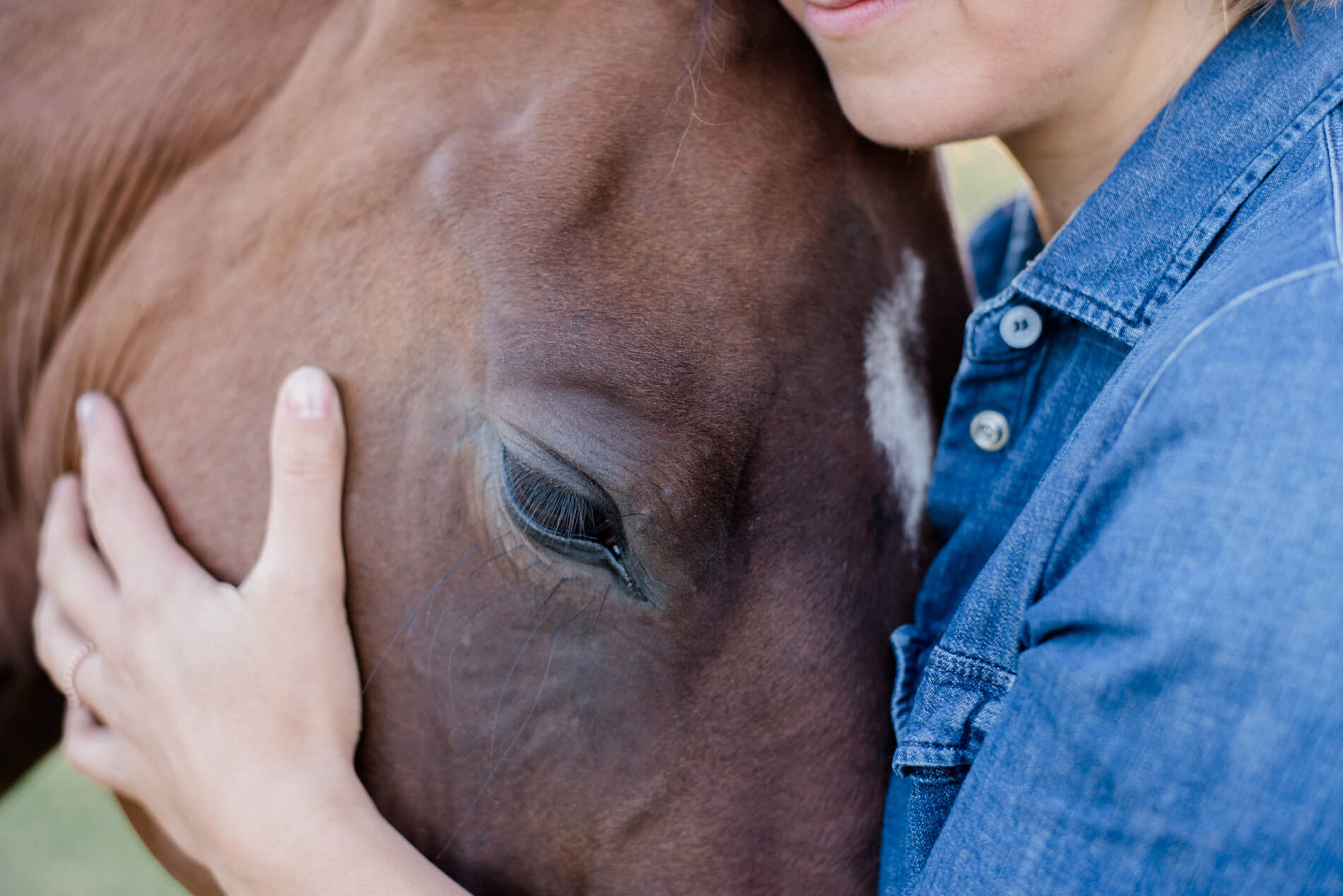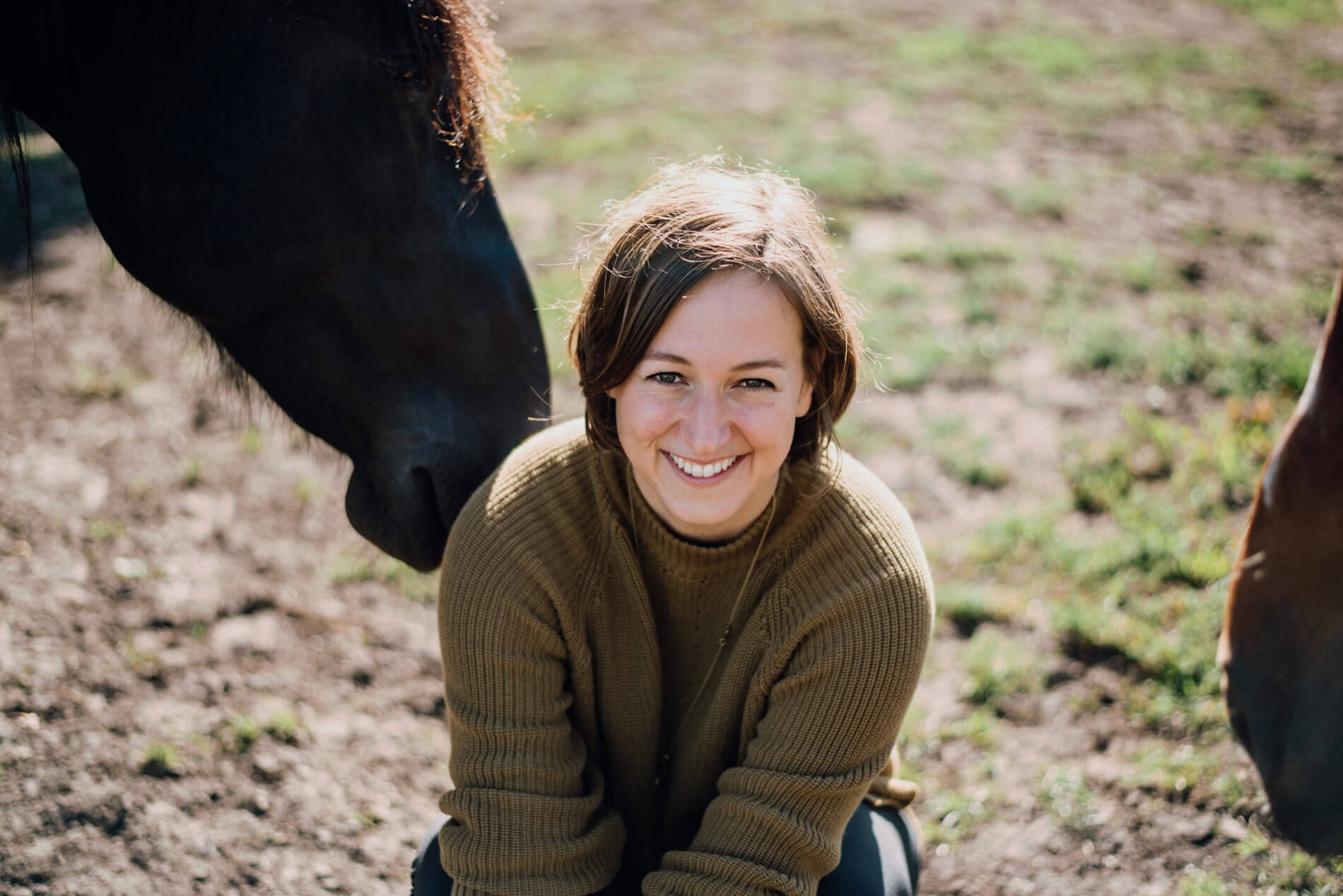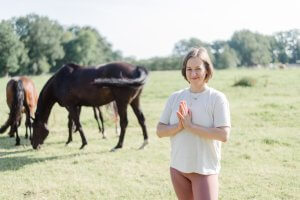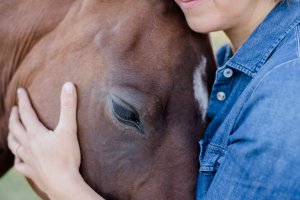Would you say that you have a friendship with your horse? And: would your horse say that too? Behavioral science is much further here than most horse owners and we can learn a lot from it. About misunderstandings and myths, due questions and opportunities around the relationship with our horse.
Imagine you have a good friend named Tina. You haven’t seen Tina in a while and invite her over for coffee and cake. Tina brings her newborn baby with her and hands it over carefully: “Would you like to hold her?” Of course you do. While the coffee is brewing, you scoot closely together on your kitchen bench, you look at each other and start bringing each other up to date on your life and all mutual subjects. Then you get up to get the homemade apple pie you made for the occasion. Tina is thrilled, loves it and asks you for the recipe. You spend a wonderful afternoon together and blissfully part ways in the evening with the good feeling that you have further strengthened your friendship.
What do you do to strengthen the bond with your horse?
Identifying as “horse people” we like to consider our horses our friends, too. What do you do to strengthen the bond with your horse? Being the humans that we are, we of course tend to do the very same things: We go up to the horse and pet it. If we want to be extra friendly, we may feed one or two extra treats or we prepare an extra delicious bowl of Sunday mash. We are looking to find the horse’s gaze and make eye contact. We touch it some more. We speak to it in a friendly manner. We “give him a day off” from time to time. We clean it extra thoroughly and maybe even try out this new massage technique that we have read about. We are working through our list of friendly acts as we know them. The thing is: horses are not humans. For horses, these gestures, with luck, are decently nice, with less luck, are uncomfortable and crowding. Because horses lead friendships very differently than humans.
Dr. Emily Kieson and Jessie Sams from the MiMer Center for horse-human education and research in Sweden have spent years researching how horses really feel in our care. What different types of training and handling feel like to them. And whether and how a friendship between horse and human can really be conducted – especially if other factors such as training and riding also play a role.
“Unlike dogs, we don’t usually think of horses primarily as companions, but rather as a partner or even ‘tool’ that we do something with: ‘What are you doing with your dog?’ hardly anyone would ask while the question ‘What are you doing with your horse?’ is perceived as normal”, says Kieson. And that’s the way it is: Most horses are “used” by us in a way – the focus is mostly on riding, training, the mutual tasks. The friendship that most riders would probably state that they’d want is welcome as a side effect but often has a stale aftertaste. Would Tina be your friend if the time you spent with one another are, in addition to many gestures that are not particularly meaningful to you (see above), primarily based on her telling you what to do? With your obedience (or let’s say: your “cooperativity”) being the condition for the “friendly” way of being around each other? If Tina were your boss, you might tolerate this as long as you are okay with quite traditional management techniques – but does Tina also become your friend acting this way …? And why should it be any different with horses?
It is time for us to learn to better interpret communication and attachment behavior, and to understand what role we want to play in our horses’ lives.
It is time for us to learn to better interpret communication and attachment behavior, and to understand what role we want to play in our horses’ lives. Fortunately, it is slowly seeping through in equestrian circles that we don’t have to be the horse’s “boss” in order to successfully handle them. However, as far as I know, hardly any rider knows that horses are completely oblivious to the hierarchical thinking that we put them under. Horses do not think in terms of dominance hierarchies or rank, there are no higher or lower ranked horses and there’s also no “boss” among them, to which everyone is subordinate. “Rather, herds of horses are a complex network of individuals and individually designed two-way relationships. In human care, rare resources also play a key role in observable behavior: space and food. There are horses that need more space around them than others – sometimes more than is available to them in total – and defend their space quite vehemently against most other horses. There are horses that are better at securing food and keeping others away from it. This creates behavior that may be interpreted as dominant. But it is not about hierarchies, not about the relationship of the horses to each other, not about character traits and about securing a status, but about current behavior and the scarce resource of feed, ” says Dr. Emily Kieson.
“Leaders among horses, for example in unknown situations or new resources, become leaders because other horses follow them, because enough other horses consider them to be a good leader in the respective situation – not because they previously positioned themselves as leaders to have.”
The stress that we observe in the herds does not arise because “horses just are like that”, but from human management in the past or present. I know – letting these ideas marinate and looking at the behavior of our horses under this new filter feels a bit like we are deliberately trying to break our heads from the inside. At least, that’s how I felt after decades of seeing horse behavior differently. But what opportunities does it offer to get to know the depths of horse behavior?
So how do horses develop friendships? The individual two-way relationships in the herds form through time spent together, mutual observation and consistency in behavior towards one another. Each horse is a little different in its communication and behavior, so no pair of horses is like the other. Horses usually communicate with each other through their entire bodies and are masters of strategic positioning. Friendly horses often like to stand close to one another and move together. The mutual grooming (allogrooming), which we often interpret as a clear sign of horse friendships, is not necessarily part of every friendship. In addition, it is often observed after stressful situations, so that it can be assumed that it is indeed a stress reduction behavior that occurs more frequently in managed environments than in the wild.
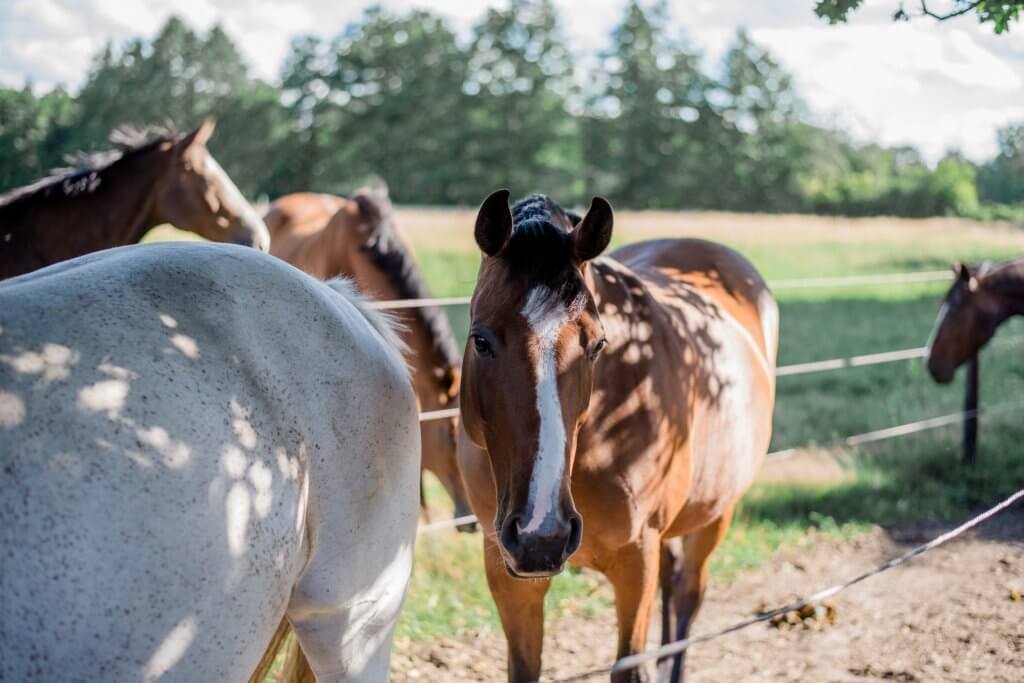
Positive contact between horses, that with horses is always mutual, takes place only on the basis of trust and a common communication. If one horse goes out of contact, it ends. “Horses perceive very precisely how the other horses behave in their environment at all times and react accordingly. This also creates trust – they pay attention to one another and respond to each other, ” Jessie Sams states. One-sided touches are usually negative and very short-term. Under natural circumstances, horses use them in short instances to set boundaries – usually the horses understand quickly and permanently. Stressed horses and, for example, early weaned horses show this aggressive behavior much more often. Also important to consider: A horse would never touch or hunt a friend in a negative way.
And even with the apple pie we couldn’t really score if Tina were a horse – at least not really. “While friend horses like to share their space with each other, sharing food does not play a role in bonding behavior,” Jessie Sams says. No wonder: In the world out of which our horses come, there is plenty of food. Of course horses like to eat, especially when they are hungry (which they are more often than we tend to give them credit for). But they don’t combine the eating experience with the “giving hand”. “As soon as the taste is gone, so is the association with the feeding hand,” says Kieson, describing her somewhat sobering insights. So our horses actually don’t like us anymore if we feed them more. Too bad, actually. Or: Good. Because that means that we do not need food in order to be perceived by our horses as better friends. We can simply meet them for what we are: other beings on (mostly) friendly missions.
But how friendly is this mission in the horses’ eyes? “The answer to this question is quite complex – it varies from human-horse pair to human-horse pair and certainly also over time and in different situations,” says Jessie Sams. Basically, it is good to even ask yourself this question. To answer it you need not only knowledge of horse behavior and communication, but also observations of the respective horse in different situations.
When we watch horses we usually like to label their behavior right away. We interpret what we see according to our own tendencies as well as cultural and personal learning experiences. Yet the more we dig into the drawers that are already created in our minds in order to make sense of what we see, the less open we are to alternative interpretations. And therefore: To what’s actually happening. So: Just take some time and watch your horse, without wanting to interpret the behavior right away. How does the horse behave in different situations? What does it look like when it is tense, how does the behavior change once it relaxes again? What about other horses? And here, it is actually very enriching if you do not try to answer this question by means of an alleged ranking, but rather simply observe the horse in interaction with other horses. You will probably find that your horse behaves very differently towards some horses than towards others. And that the context plays an important role. What suggests a friendship and what an antipathy? Horse behavior is very nuanced and looks a little different in every herd and on every horse.
The better we get at understanding the quiet language of our horse’s movement, the deeper the dialogue with our horse can get.
If we know and can classify the range of behavior of the horse and know our own individual horse well, it is easier to read its behavior towards us. The better we get at understanding the quiet language of our horse’s movement, the deeper the dialogue with our horse can get. If we assume that horses build bonds over a lot of time and shared space, synchronous movements and – at some point – shared experiences: How can we shape everyday life with the horse so that the bond can deepen? How can you allow some “friendship time” beyond riding, in which we can really collect “friendship points” with our horse?
For us riders, this usually requires no less than to rethink almost all of our behaviour and thoughts about our horse: If we really want to focus on friendship, we have to practice letting go of our goals (at least for the moment). Get away from the desire to manipulate the horse’s behavior in any way and achieve a certain result. To remember and, even more difficult, to be willing to accept it when the horse says “no”. Spending unplanned time together.
And we have to ask ourselves honestly whether the training as we are currently doing it promotes friendship or is contrary to it. “Every training is behavioral manipulation. But not every training feels the same for the horse,” Jessie Sams says. To dig deeper here, it not only makes sense to learn about stress behavior and the different forms of stress, but also to break down my training technique and understand: When do I work with negative and when with positive reinforcement, for instance? Are there any truly relaxed phases? Situations in which the horse can (co-)decide? Are there moments of defense, flight or freezing? How does my horse behave in training? What does it really like, what less? How do I behave in the horse’s eyes? Are our touches mutual and positive or consistently very one-sided? When does it really feel like “softness”, an inner harmony between horse and human? And at what instant do I end the training situation?
All these questions can bring us closer to our horse, step by step. The more we become aware of what we do with the the animal, how we spend our time together, what experiences it makes with us and the better we know our individual horse, the easier it is to develop our relationship positively. Not overnight, but in a slow, rewarding process. All of this takes courage. Courage to admit that we may presently rely more on techniques and aids than on trust in our horse and our relationship with it. Courage to experience that not everything works like in the movies from the very start, no matter how much we think we already know about horses. Courage to recognize that we have not always acted like a friend to our horse in the past. But it brings us closer to our goal of having a real friendship with our horse. And isn’t that what we all got into this for in the first place?
This article was originally published in German in the magazine “Feine Hilfen”, issue no. 43. For the German version see here.
